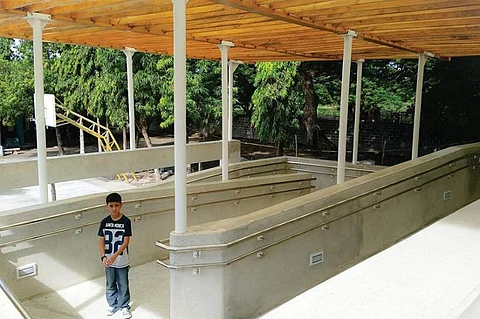

IN a global celebration of St. John Bosco’s Bi-Centennial, the school rector in Dumaguete City desired a connection of Don Bosco School to the 21st century through a new elementary building. Tapping the architect behind its chapel in 2003 to envision a building integrating passive green architecture, architect Ned Carlos, principal architect of the Dumaguete City-based Carlos & Antique Architects, took the commission with a global perspective.
This design process required an efficient use of materials and effective use of space in its setting; accordingly, the architect incorporated sustainability as the key element in the foundation of the design.
First, the architect proposed to use lime to combine with concrete as surface plaster, replicating Bio-Concrete which is the current state-of-the-art in concrete technology. The essential characteristics of Bio-Concrete is to deflect heat to cool the building and self-heal concrete cracks, making it more sustainable as a practical material for the project. He also optimized wood from scaffolding, which provided an opportunity to be utilized as a roof structure for outdoor walkways.
Second, the architect prioritized to design a convenient access for all types of schoolers by proposing a ramp with a slope of 1:12 with a trellised roof as part of the landscape; thereby, interconnecting all functional school areas. This garden roof provides natural ventilation and lighting, making the ramp more habitually used over the stairs. He also designed berms for landscaping and elevating the building from flood. The architect also incorporated screened railing, large overhangs and sun louvers to complete his concept for passive green design.
Due to the industrial look of solar panels which were to be incorporated into the building, the architect proposed a shed-type roof to obscure solar panels relative to the observer’s visual sight.
As a result, the Bi-Centennial school building in the Don Bosco campus of Dumaguete City is a sustainable learning facility enriching the schoolers’ perspective toward embracing sustainable practices. Performing such methods triggered a workable innovation in the process, where unconventional but practical methods are essential in sustainable development. “Moving toward an ecological approach in designing educational spaces,” said Carlos, “promotes other alternative methods toward sustainable design.”